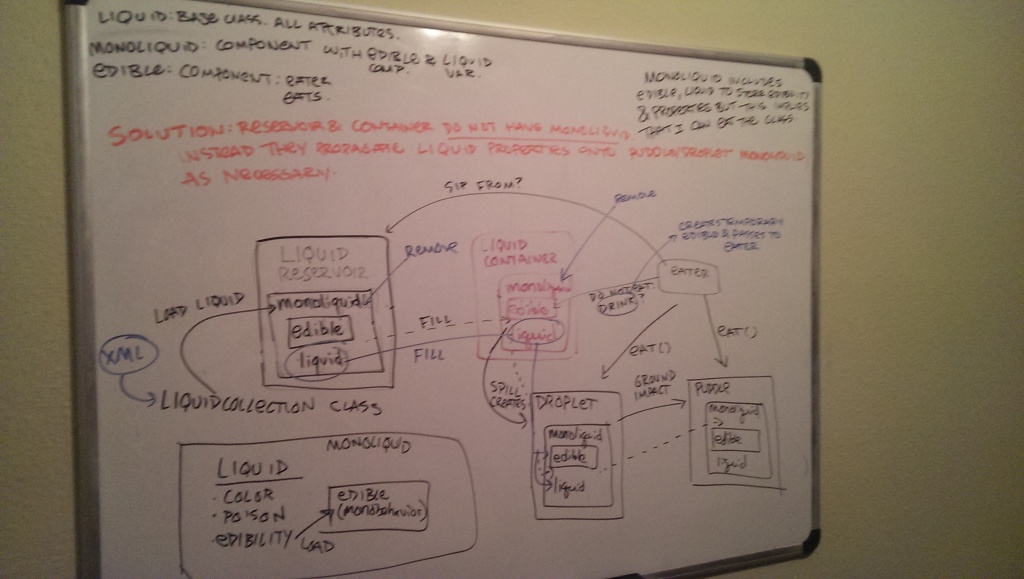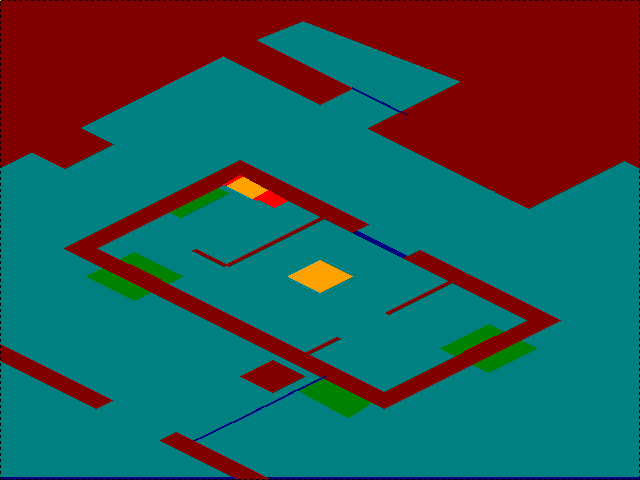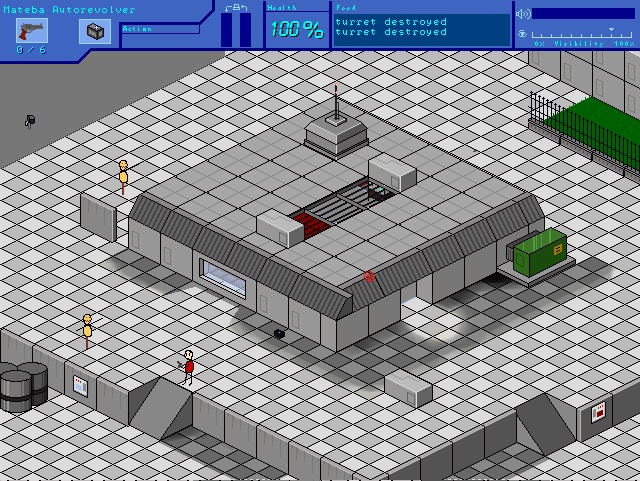Epic Banana will be at Indiecade 2014!!!
Just FYI, I submitted DataJack to this year’s Indiecade festival and have claimed my developers’ ticket! If you’re in the Los Angeles area at all over the weekend of October 9th – 12th and you want to chat or whatever just let me know! Alternatively if you’re going to be there and don’t want to chat then you can expect a tense game of cat-and-mouse as I send forth my agents to hunt you down.
rshaw@epicbanana or https://twitter.com/scrudgey drop me a line baby you know I’m down for a good time
I am still alive!
Well I’m more or less done with my Tanks vs. Mummies experiment, which I began as a little project in order to learn the basics of Unity. Satisfied with that, I’ve started on my next major game project. I’ll announce what that is when I have some more to show for it, but I’ve been working on it for several months now and I’m really excited about it.
If you’ve sent me an email at all recently, I apologize for the delay, I’m trying to get back to everyone as possible with my current schedule. Stay tuned!
I am learning Unity
Unity 2D, that is. With 4.3, Unity has added a whole new 2D toolset. This is great if you want to make a game but don’t have an army of 3D modelers and level designers to help make your game look halfway decent.
The only downside right now is that 2D tutorials are scarce because it’s so new (to be fair, this guy is doing great stuff) . However, the most important parts of the 3D stuff still apply here, which is great if you’re already familiar with Unity. If you have experience with object-oriented design patterns then a lot of it makes intuitive sense. I still need to actually make something to get a hang of it though, and since I’ve outpaced the tutorials I’ve found, I’ve been plunging headlong into a stupid throwaway project called Tanks Versus Mummies.
(If you’re an OG Epic Banana fan, you may recognize this as a playable game-within-a-game in Another Day at Work: Wednesday)
So far Unity is great to work with, thoroughly documented, and robust. On the 2D side of things, I don’t like the lack of a snappable grid (resulting in unaligned pixels) but since the meat of Unity is in its code and not its scene editor people recommend creating level layouts in an external format and reading them in. The fact that we’re also dealing with a camera instead of a fixed resolution kind of grinds my gears but maybe I need to get with the times. Anyway these aren’t major problems, just aesthetic gripes.
All the books cited in DataJack
What exactly goes into a DataJack level? And version updates
I know some of you are curious, so I’ll lay it out here. DataJack was of course made with Multimedia Fusion 2. MMF can make some sweet games that don’t have to look as crappy as DataJack if you really sweat the pixel art and effects, but it does have plenty of quirks you need to know to get the most out of its scripting language. Thankfully, I’ve been working with programs in the clickteam family since I started Epic Banana in the 90s.
Let’s take a look at one of the later levels, “Third Time’s the Charm”:
It starts out as a bog-standard “break in and steal this thing” level but there’s a twist in the second act.
Now at the base of the level is the collision layer:
This mask clearly tells the game which parts of the level are obstacles, which are things you can crawl under, which are half-height obstacles that provide cover, glass, ledges, etc. Each type of terrain has a unique RGB color. The advantage of this method is that it allows me to modify the terrain on the fly, allowing for destructible walls and things. Destruction is very important!
The backdrop provides the visual background for the level, which provides the player with information about where there are loud and quiet surfaces, basically.
The shadow map serves two purposes: for one, the player can hide in the shadows and so it’s important to consider where to place them. Secondly, it adds a touch of visual variation to the scene and drawn-in shadows of buildings & etc. can add to the three-dimensional quality of the scene.
I usually start by roughly blocking-out a level here, on the main action layer. I drag & drop sprites into the scene to build up the level, and they are for the most part autonomous and know how to handle whatever situation I create. Things like computers and interactive stuff usually requires a little hand-tuned coding.
The roof graphics & the HUD layer sit on top of this, and there’s a separate mask to control where the roof should be displayed; e.g. you don’t want it displayed when the user is inside the building, or when the user has a line of sight to a window. The roof adds another layer of strategy to the game, as planning an approach to a building that you can’t see inside can be tricky.
The patrol map is the single most finnicky part of the game design and I should probably have touched up its code or gone with a different method. It sits in an invisible layer and tells the guards & robots the rough path they should follow when they’re on patrol. Each RGB color corresponds to a direction of motion which is slightly randomized, and the yellow colors tell patrolling guards to reverse their directions. Dealing with this thing could be a nightmare sometimes.
Lastly there’s a material map which encodes what sound your footsteps should make, and correspondingly how loud they are. There are a handful of materials in the world and some I never even used.
That’s the quick rundown. All of these layers sit in a photoshop document, and I perfected a streamlined workflow for the whole thing. The principal difficulty was in finding a unique layout with multiple approaches, where to place hackable items and how to direct the player through a sort of obstacle course.
Updates
So I’ve put bug fixes in place for what seem to be the major problems: the bugged final tutorial level and the way in which things like the red keycard don’t carry over from scene to scene. Also a handful of smaller fixes. I just need to test this version & then send it off to Desura and it’ll be ready in the week.
After this I’ll be implementing some new features: screen sizes intermediate between fullscreen and 640×480 and maybe possibly a keymapper. Stay tuned!
Press Response and Known Bugs
DataJack is getting some awesome press!
http://indiestatik.com/2013/11/22/datajack
http://www.kotaku.com.au/2013/11/datajack-is-your-free-isometric-cyberpunk-themed-pc-game-for-today/
http://indiegames.com/2013/11/freeware_pick_deus_ex_inspired.html#more
Fullscreen Mode?
To run the game fullscreen, use the fullscreen_launcher.exe in the DataJack folder.
Known Bugs
Everyone is bringing up that the tutorial is kind of bugged in at least the last (stealth) portion. This is strange to me, I’m trying to see if I can reproduce it. Also I suspect the red keycards are not working as intended due to a different bug fix. These will be fixed in my next update.
It should also be possible to include a key mapper. This is something I’m working on.
Desura Ranking
DataJack’s current ranking:
And stats. 90,000 hits so far!
Social Media Networking in the Internet Era of Connectivity
My youtube page: https://www.youtube.com/user/scrudgey
And my twitter account: https://twitter.com/scrudgey
DataJack is launched!!!
Yep, it’s up on Desura. Grab it here:
Why no direct download?
Uh I’ve been informed that there is a direct download, right here:
Stay tuned for updates…
Release Date: November 22
That’s right, a week from today everything should be in place to send DataJack off to the good folks at Desura.
FINALLY.
I started my first dev log back in August 2008, which means I’ve been working on DataJack for five years. It hasn’t always been a constant stream of activity, but it has always been my main project focus. I began work on DataJack simply because I wanted to make the game I always wanted to see, and I assumed other gamers felt the same way. I knew it was a larger project than I’d done before, but didn’t quite anticipate the extent of effort it would require. But Epic Banana doesn’t back down from an ambitious project, oh no.
Things have come quite a ways from those first test builds. Features were added and removed, enemies were defined and programmed, I made 24 separate missions, a town, user interface, shops, and 28 different weapons. Every step has introduced new challenges, and every phase of development is a different sort of workflow: designing the game, coding its basic engine, creating levels, animating characters, writing flavor text, playtesting and bugfixing.
Of course, even from the very beginning I found a loyal (and very patient) fan base that kept me motivated through the whole thing. The community response has been very encouraging so far. You’ve waited long enough!
The last game I released under Epic Banana Software was Another Day at Work: Wednesday and that must have been in 2002-2003, meaning this will be the first official release in ten years.
As Epic Banana, I’ve always released my games for free. This means that my efforts are entirely supported by gamers like you. I think I must be at least a little bit crazy to give away a five-year project for free, but in the end I want as many people to play it as possible. Please donate if you can.
After DataJack (and perhaps a short break) I have many, many more game ideas that I would love to realize. I have more ideas than I have time, at the moment, unfortunately. But stay tuned, for the release of DataJack, and for what comes next!

















